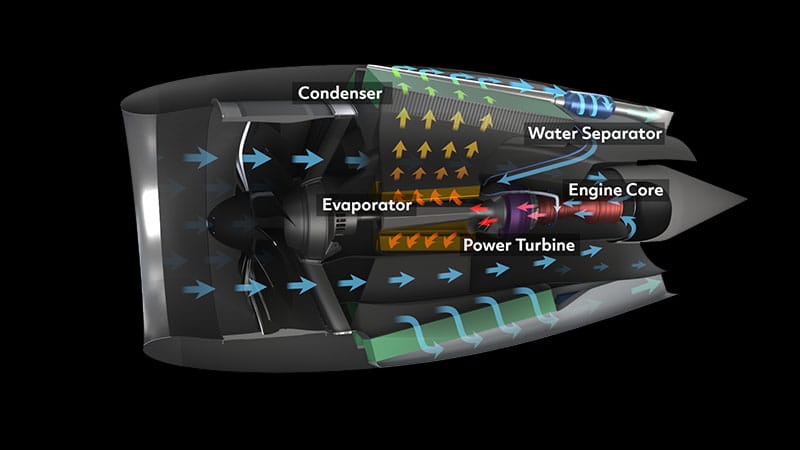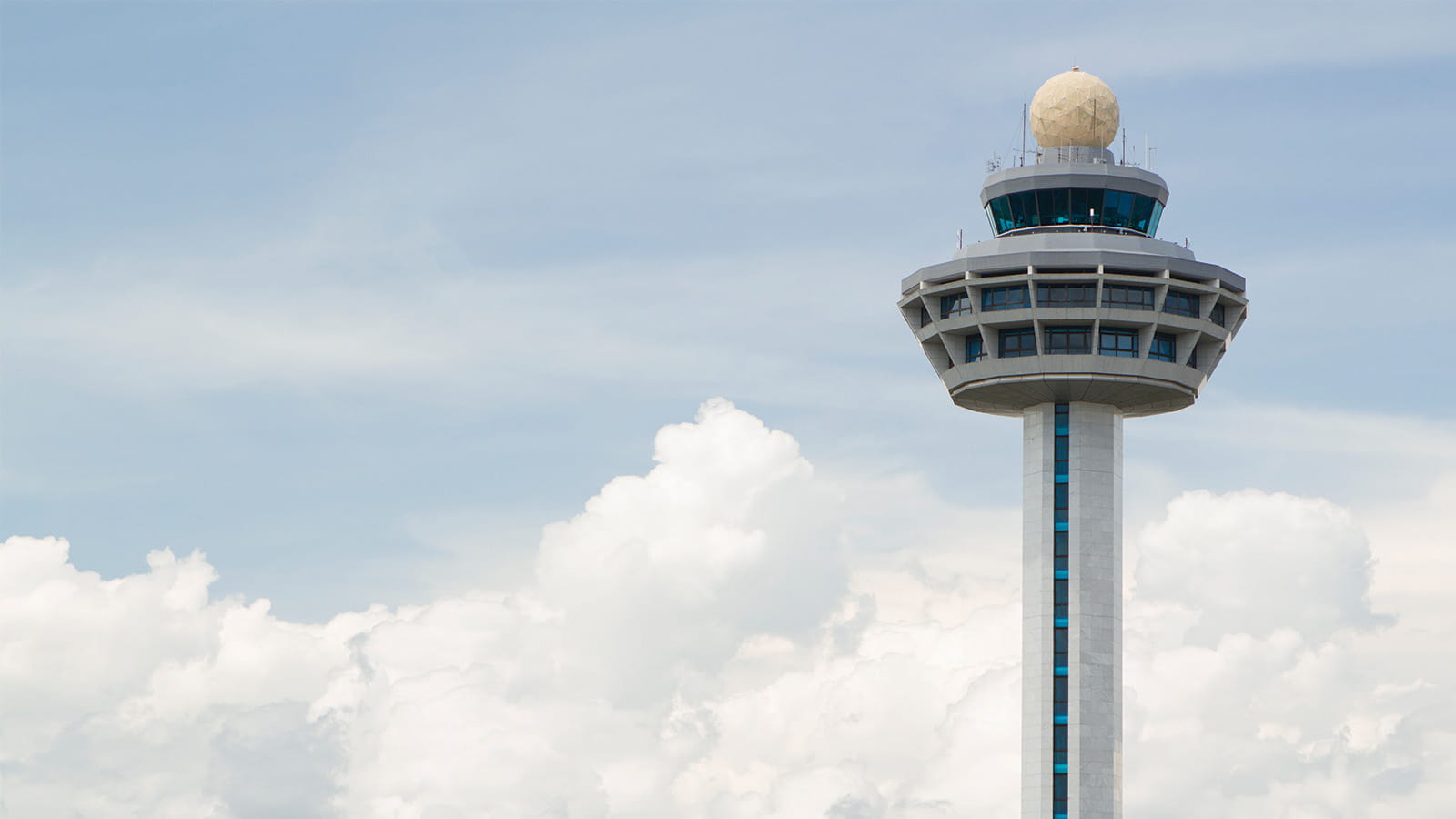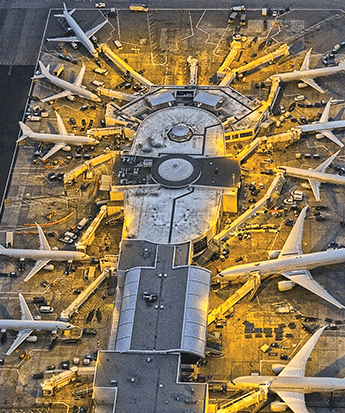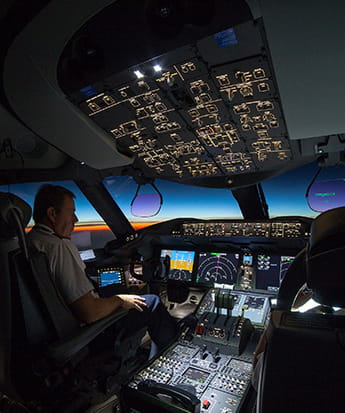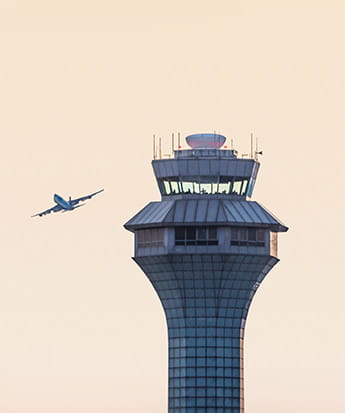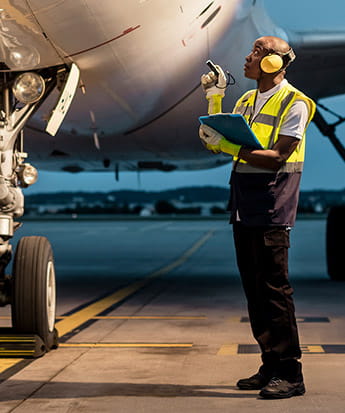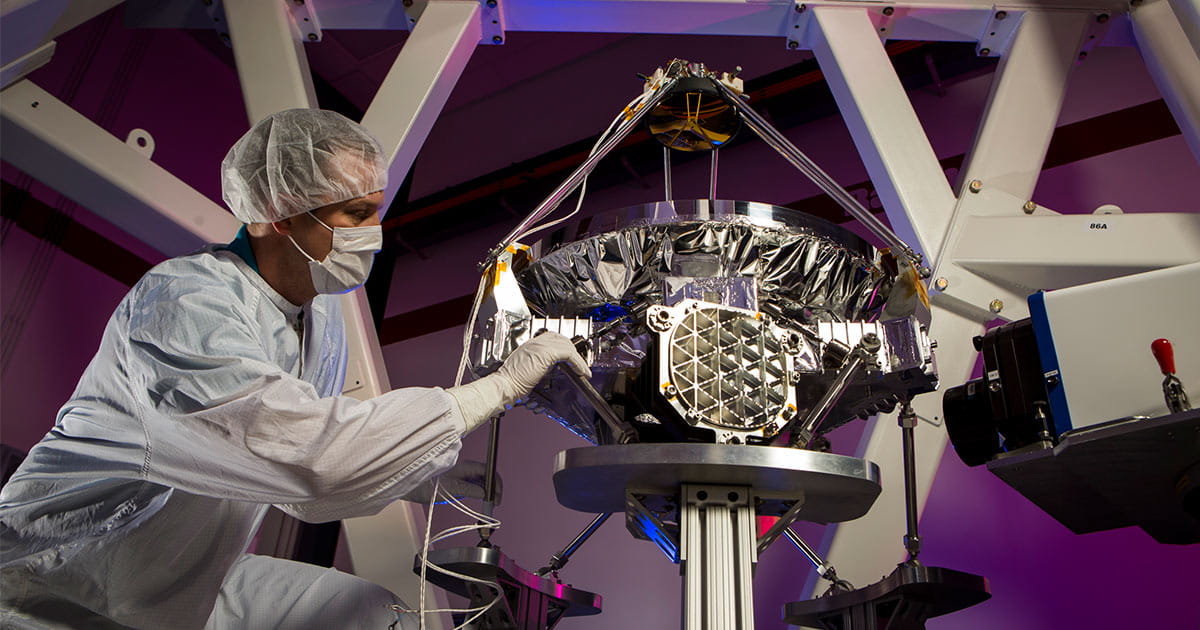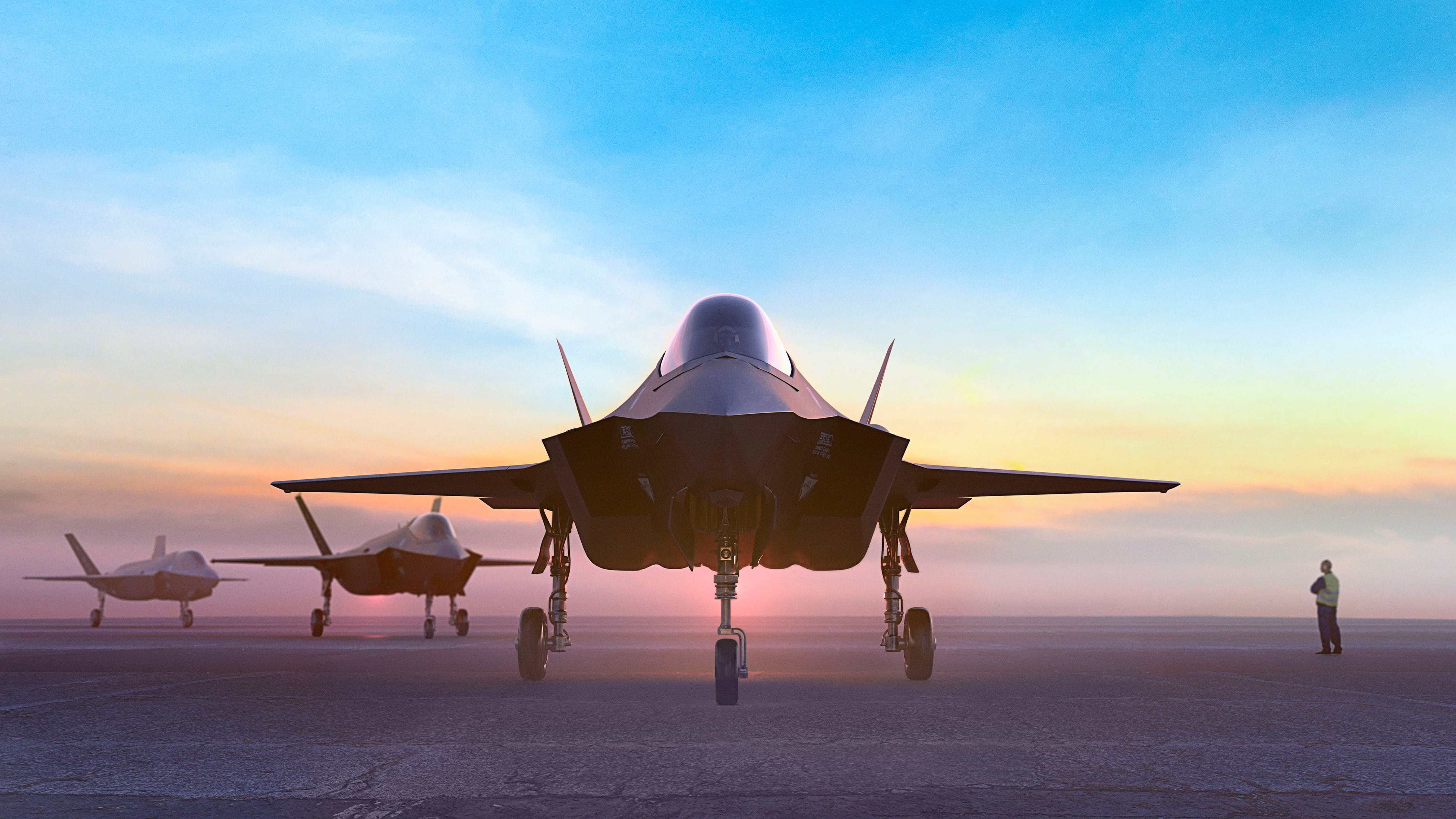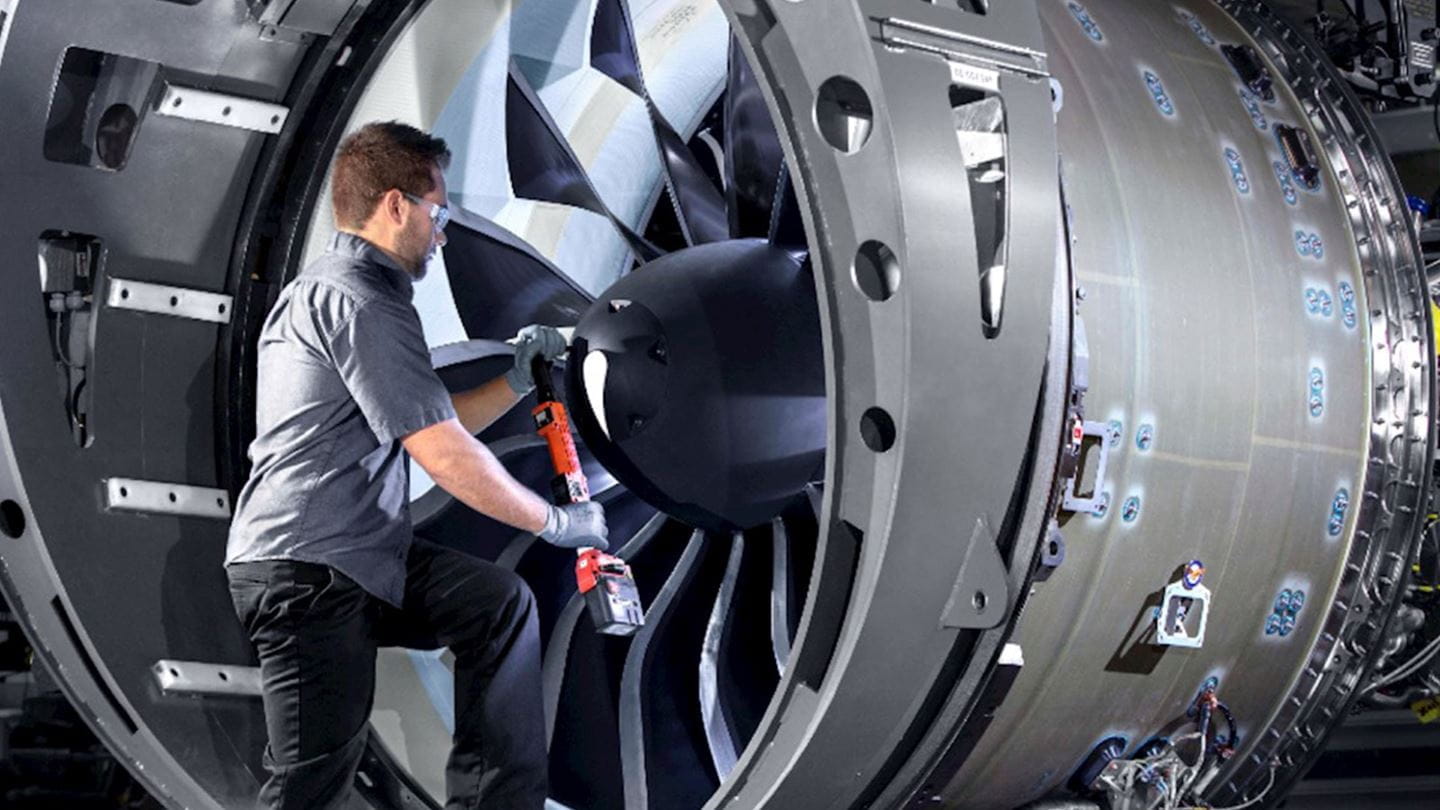
RTX is innovating for the future of flight
Improving engine fuel efficiency

Pratt & Whitney pioneered the GTF engine, delivering a 16-20% improvement in fuel efficiency for single aisle aircraft, while reducing NOx emissions by 50%, and noise footprint by 75%. The GTF provides the foundational architecture for maximizing propulsive efficiency, allowing even greater improvements in efficiency in years to come.
- Pratt & Whitney is advancing its geared turbofan architecture, increasing engine efficiency through larger-diameter fans and smaller-diameter, higher-pressure-ratio turbomachinery.
- To enable those architecture improvements, our experts across the company are introducing new materials, including ceramic matrix composites, which can operate beyond the melting point of today's best nickel superalloys.
Advancing hybrid electric propulsion
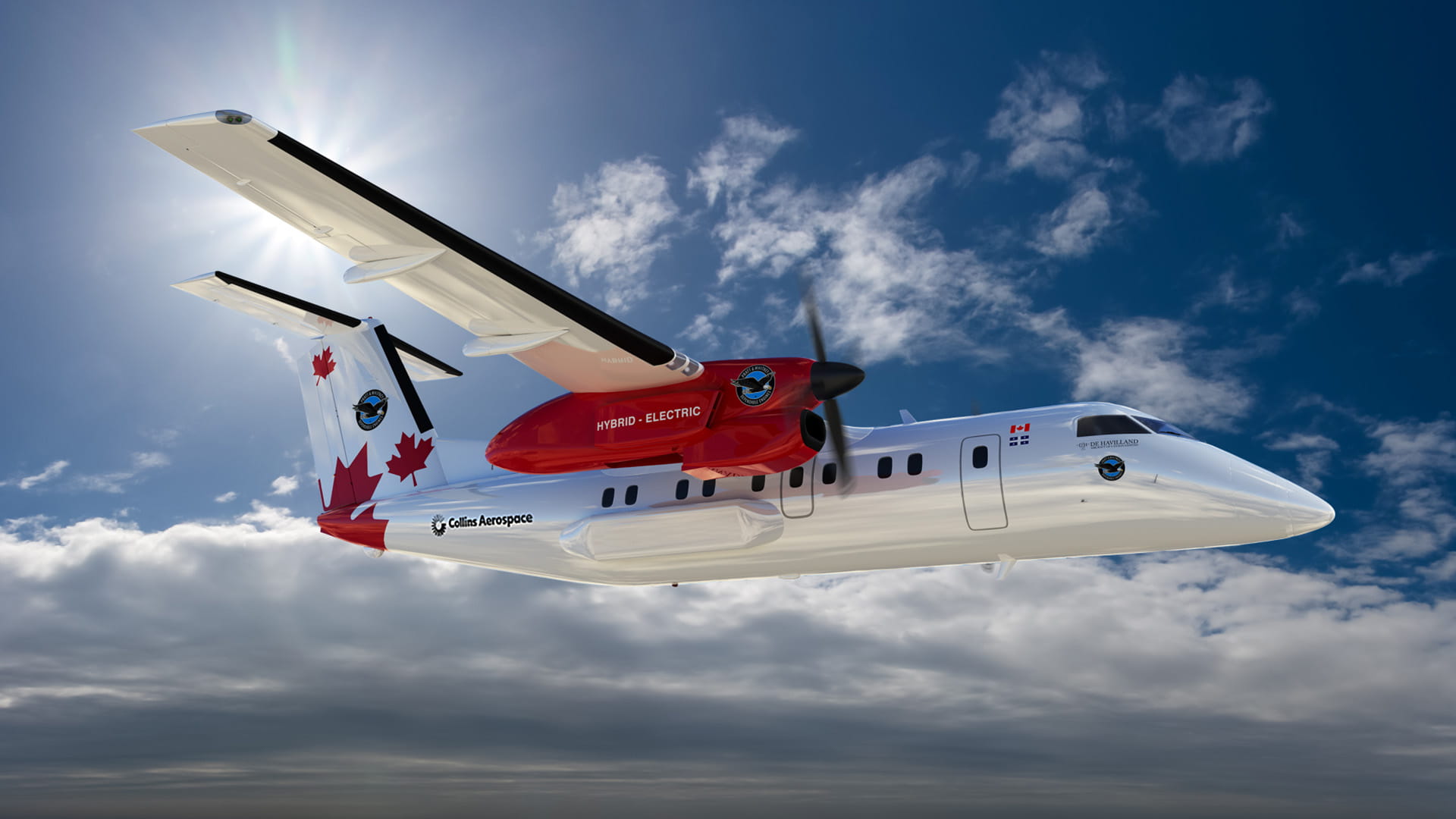
- Pratt & Whitney and Collins Aerospace, supported by the governments of Canada and Quebec, are developing a hybrid electric demonstrator on a De Havilland Dash 8 regional aircraft.
- Pratt & Whitney and Collins Aerospace are also partnering on the hybrid-electric Scalable Turboelectric Powertrain Technology (STEP-Tech) demonstrator program, with a modular and scalable platform that can address a variety of potential applications, including advanced air mobility vehicles, high-speed eVTOL and blended wing body aircraft.
Supporting synthetic aviation fuels
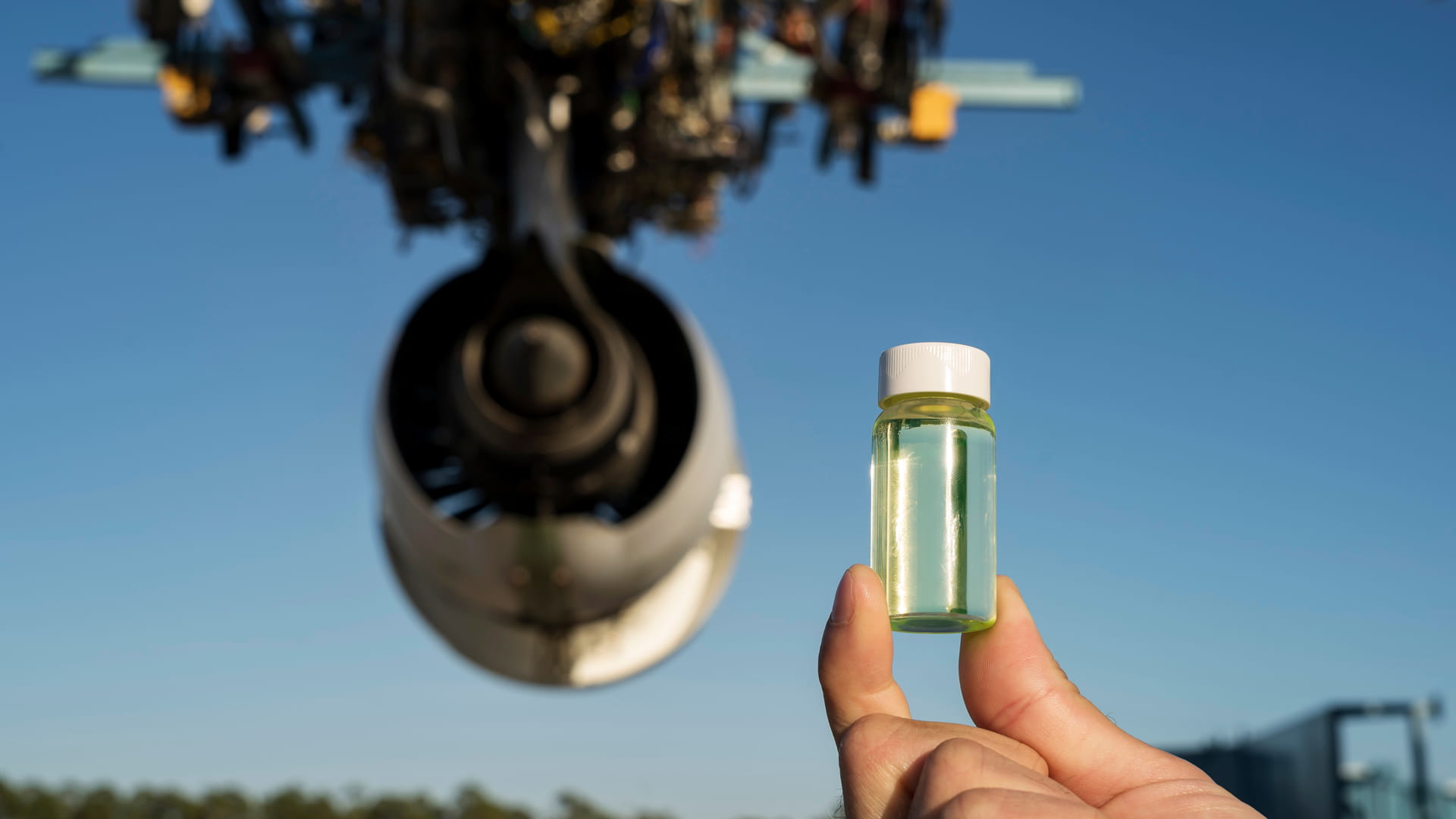
Synthetic aviation fuels, or SAFs, are alternatives to fossil fuels. SAFs include biofuels, which are made from agricultural products that absorb carbon dioxide before they’re harvested. Pratt & Whitney has been active in SAF testing and certification for almost two decades, and its modern engines are compatible with the approved 50% SAF blend.
- We evaluated the compatibility of both blended and 100% SAF pathways through extensive testing of our commercial and military engines.
- We continue this effort in support of the aviation industry objective to identify multiple 100% SAFs that will minimize environmental impact, increase availability and reduce cost.
Developing hydrogen propulsion concepts
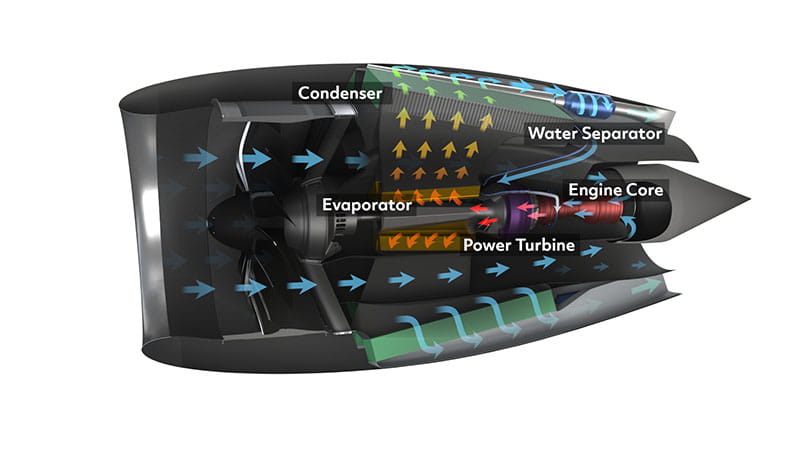
Pratt & Whitney first demonstrated a hydrogen-burning aircraft engine, which produces no carbon emissions, in the 1950s. Today, we are developing concepts for next-generation hydrogen engines and reimagining airframes to meet the engineering challenge of properly storing the fuel.
- Supported by the U.S. Department of Energy’s ARPA-E program, Pratt & Whitney's Hydrogen Steam Injected, Inter‐Cooled Turbine Engine (HySIITE) concept is designed to take full advantage of the cryogenic properties of liquid hydrogen fuel, using water vapor recovery and steam injection technology to enable up to a 35% improved energy efficiency, compared to a current state-of-the-art single aisle propulsion system.
- Pratt & Whitney Canada is developing hydrogen combustion technology as part of the Hydrogen Advanced Design Engine Study (HyADES) project, supported by Canada Initiative for Sustainable Aviation Technology. Targeting tests on a Pratt & Whitney Canada PW127XT regional turboprop engine, HyADES will demonstrate the versality of adapting the proven and highly efficient turboprop technology to operate with low alternative fuels like hydrogen.
Evolving lighter-weight, energy-efficient systems

Making aircraft lighter can improve their fuel efficiency, increase their payload capacity and extend their range. Key efforts across our businesses to reduce aircraft weight include leveraging advanced lightweight materials and composites for structural elements that range from engine nacelles to cabin seats. We are also focused on improving energy efficiency in aircraft equipment.
- Collins Aerospace recently acquired Dutch Thermoplastics Components (DTC), a leader in the development and fabrication of structural thermoplastic composite parts – making us better able to address key areas of importance for our customers: weight reduction for fuel savings, reliability improvements and sustainable practices across the product life cycle.
- We are also reducing energy consumption in electronics, avionics, fuel systems and environmental control systems (ECS).
Optimizing routes and operations
- Collins Aerospace has upgraded aircraft avionics to enable navigation systems to harness information for optimal aircraft trajectory planning. The company’s recent acquisition of FlightAware is enabling the business to improve route efficiency of air travel.
- Collins Aerospace has been fielding and upgrading state-of-the-art air traffic management systems as part of the FAA Next Generation Air Transportation System portfolio to deliver trajectory-based operations capabilities and to bring more efficiency to the way controllers manage air traffic.
What we do
Progress is not automatic. It is initiated – by tirelessly asking the hard questions and finding answers. In our digital engineering hubs, research labs and advanced manufacturing facilities, our researchers and engineers are pushing the limits of known science.
For our global workforce of innovative thinkers, progress defines the future – and it defines us.
Who we are
We design. We engineer. We code. We research. We patent. We test. We learn. We iterate. We manufacture. We produce.
We create breakthroughs that protect and connect our world – from seabed to space, and everywhere in between.
We are RTX: a team of explorers united in our goal to push the boundaries of known science – and solve the world’s most complex problems.

